
What to Do If Your Child Is Cutting Wellness US News
Cutting is the act of purposely cutting yourself with a sharp object, such as a knife or razor blade. It's an unhealthy way to relieve emotional pain, sadness, intense frustration, and anger. Cutting commonly occurs on the arms, legs, or torso. These are places that can be hidden by clothing. Cutting affects men and women of all ages.

Man who cut off his arm speaks
What is self-harm? "Self-harm is the intentional destruction of body tissue in the absence of any intent to die," explains Nock, who specializes in treating self-injury behaviors in childhood to young adulthood. "Most often it happens on the arms and takes the form of cutting with some type of sharp object, such as a razor blade, pencil, or.

India woman’s arm ‘cut off by employer’ in Saudi Arabia BBC News
Wash your hands. This helps avoid infection. Stop the bleeding. Minor cuts and scrapes usually stop bleeding on their own. If needed, gently press the wound with a clean bandage or cloth. Raise the area until the bleeding stops. Clean the wound. Rinse the wound with water. Keeping the wound under running water will lower the risk of infection.
:max_bytes(150000):strip_icc()/keloid--ugly-women-arm-skin-scar-from-knife-cut-wound-832092744-bc3d925578504bd68c18aaedfdf7086e.jpg)
What Are the Causes of Keloid Scars?
The urge to cut might be triggered by strong feelings the person can't express — such as anger, hurt, shame, frustration, or alienation. People sometimes say they feel they don't fit in or that no one understands them. A person might self-harm because of losing someone close or to escape a sense of emptiness.

First Aid Injured Arm With Deep Cut Bleeding Stock Illustration
Decline Crunches: 3 sets 10-15 reps, increase weight each set and add a twist at the end to target your obliques. Reverse Crunches: 3 sets of 10-15 reps. For added weight add a dumbbell but ensure you have perfect technique before adding weight to avoid injury. Scissor Kicks: 3 sets of 15 kicks with each leg.
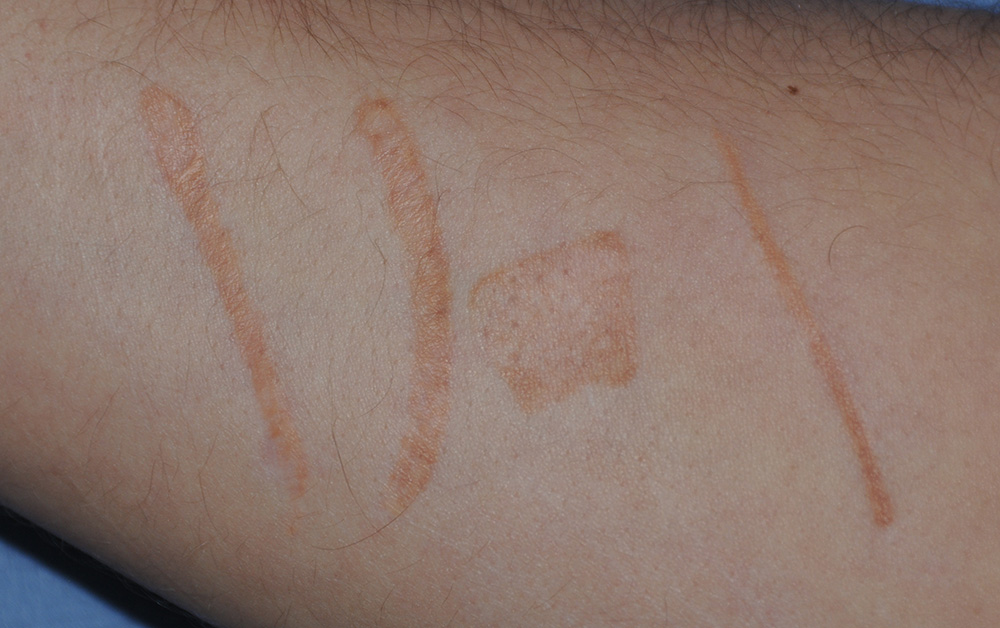
Scar Treatment for SelfInduced Scars on the Arms Seattle Bellevue
Cutting is a type of self-harm in which teens deliberately cut or scratch themselves with knives, razor blades, or other sharp objects, but not with any intention of trying to commit suicide. Other self-harm behaviors can include head-banging, branding or burning their skin, overdosing on medications, and strangulation.
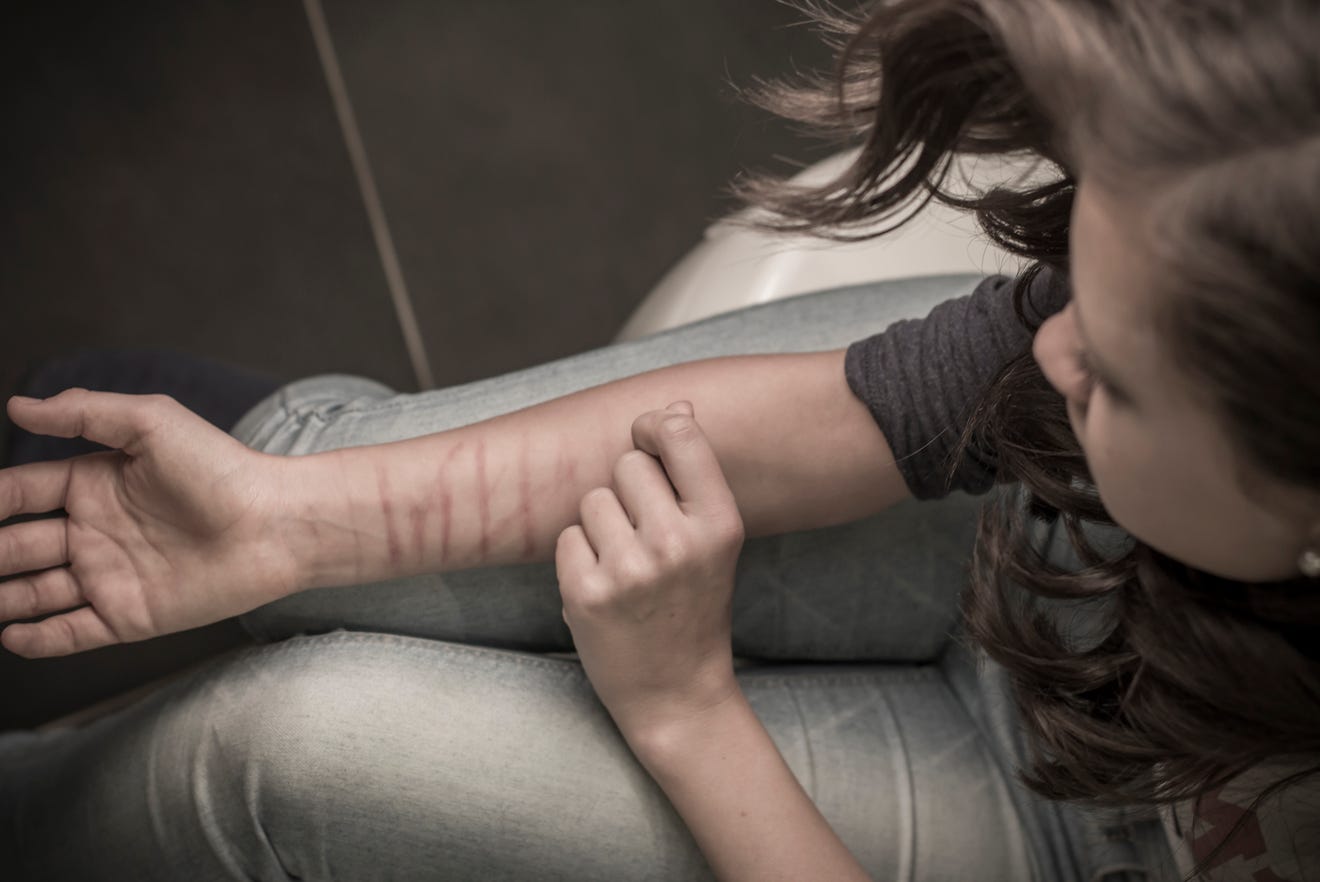
Selfharm isn't necessarily an attempt at suicide; it is a cry for help
Teen Stress and Cutting. Cutting stimulates the body's pain killing hormones, resulting in a quick mood boost. For some teens, the sensation of physical pain might give the illusion of numbing their emotional pain. This can create a relief circuit in the brain where stress relief is associated with cutting to relieve the emotional pain.
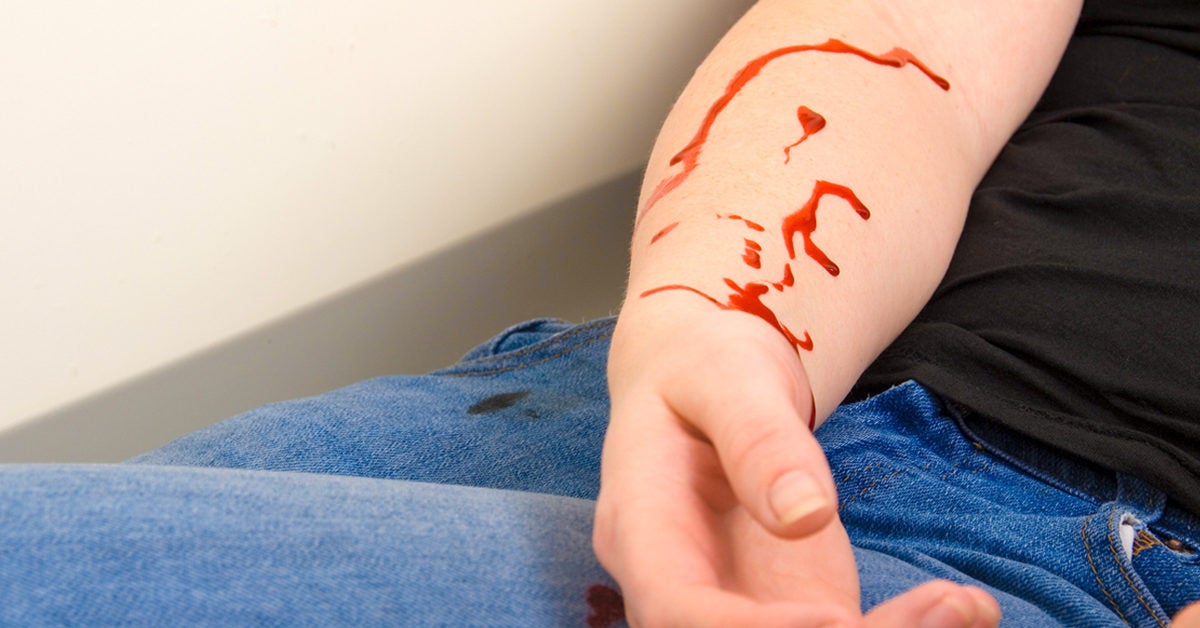
Bleeding to Death Am I at Risk, and How Can I Stop It?
Overview Cutting is when a person deliberately hurts themselves by scratching or cutting their body with a sharp object. The reasons someone might do this are complicated. People who cut.

Self Harm & Cutting Calgary Counselling Services
When teens feel sad, distressed, anxious, or confused, the emotions might be so extreme that they lead to acts of self-injury (also called cutting, self-mutilation, or self-harm). Most teens who.

5 Facts About Teen SelfInjury WSJ
Consequences of cutting and self-harm How to stop cutting and self-harm tip 1: Confide in someone Tip 2: Identify your self-harm or cutting triggers Tip 3: Find new coping techniques Professional treatment for cutting and self-harm Warning signs that a loved one is cutting or self-harming Understanding why your loved one cuts or self-harms
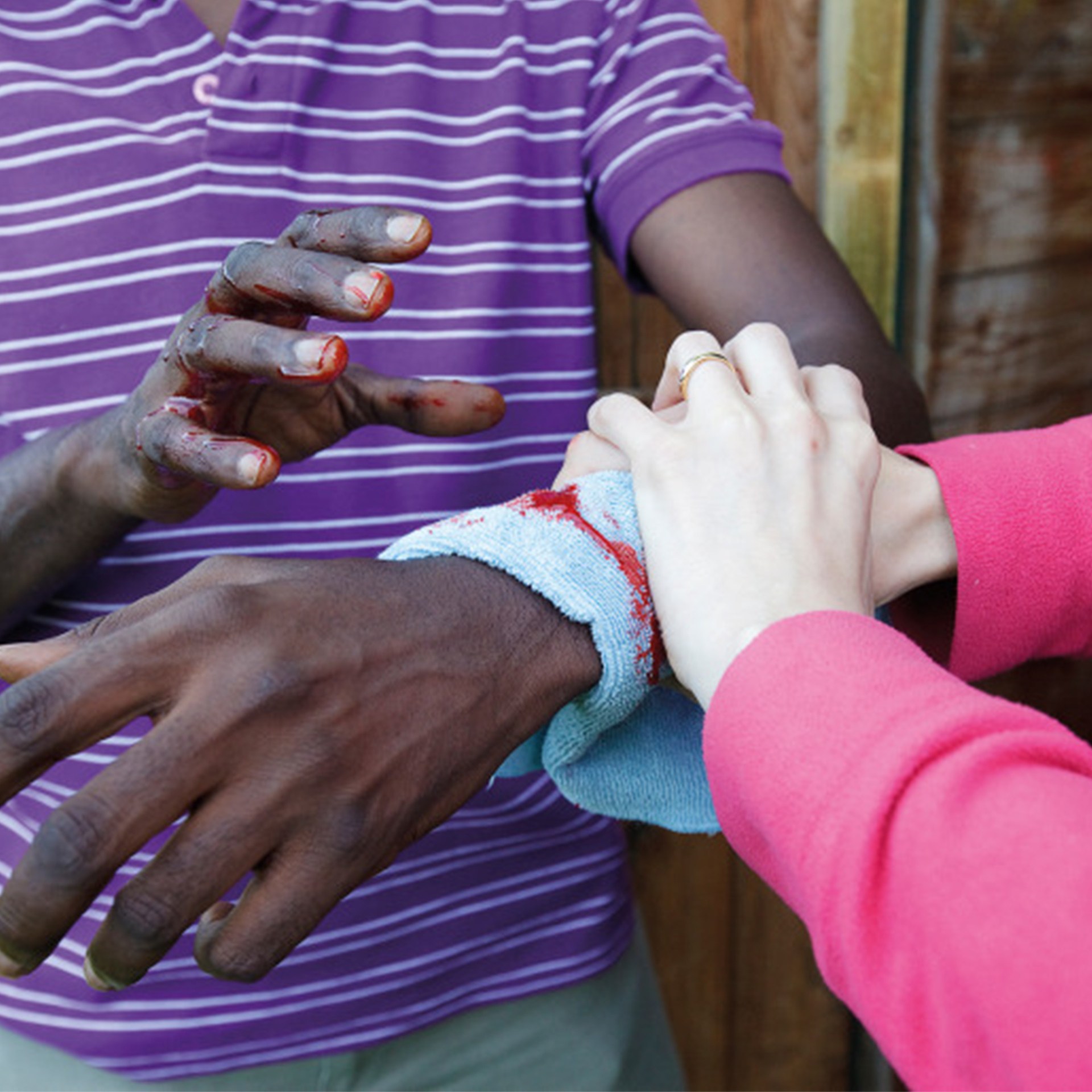
Only 1 In 2 Confident To Save A Life My Weekly
Cutting, scratching or stabbing with a sharp object, one of the most common methods. Burning with lit matches, cigarettes or heated, sharp objects such as knives. Carving words or symbols on the skin. Self-hitting, punching, biting or head banging. Piercing the skin with sharp objects. Inserting objects under the skin.

Surgeons save man's arm cut off in saw accident BBC News
Self-harm is intentional behavior that is considered harmful to oneself. This is most commonly regarded as direct injury of one's own skin tissues usually without a suicidal intention. Other terms such as cutting, self-injury, and self-mutilation have been used for any self-harming behavior regardless of suicidal intent. Common forms of self-harm include damaging the skin with a sharp object.

Social media is one reason my teen patients are cutting themselves
For most who do it, cutting or other self-harm is an attempt to interrupt strong emotions and pressures that seem impossible to tolerate. It can be related to broader emotional issues that need attention. Most of the time, it's not a suicide attempt. Cutting affects many teens and preteens — even beyond those who self-injure.
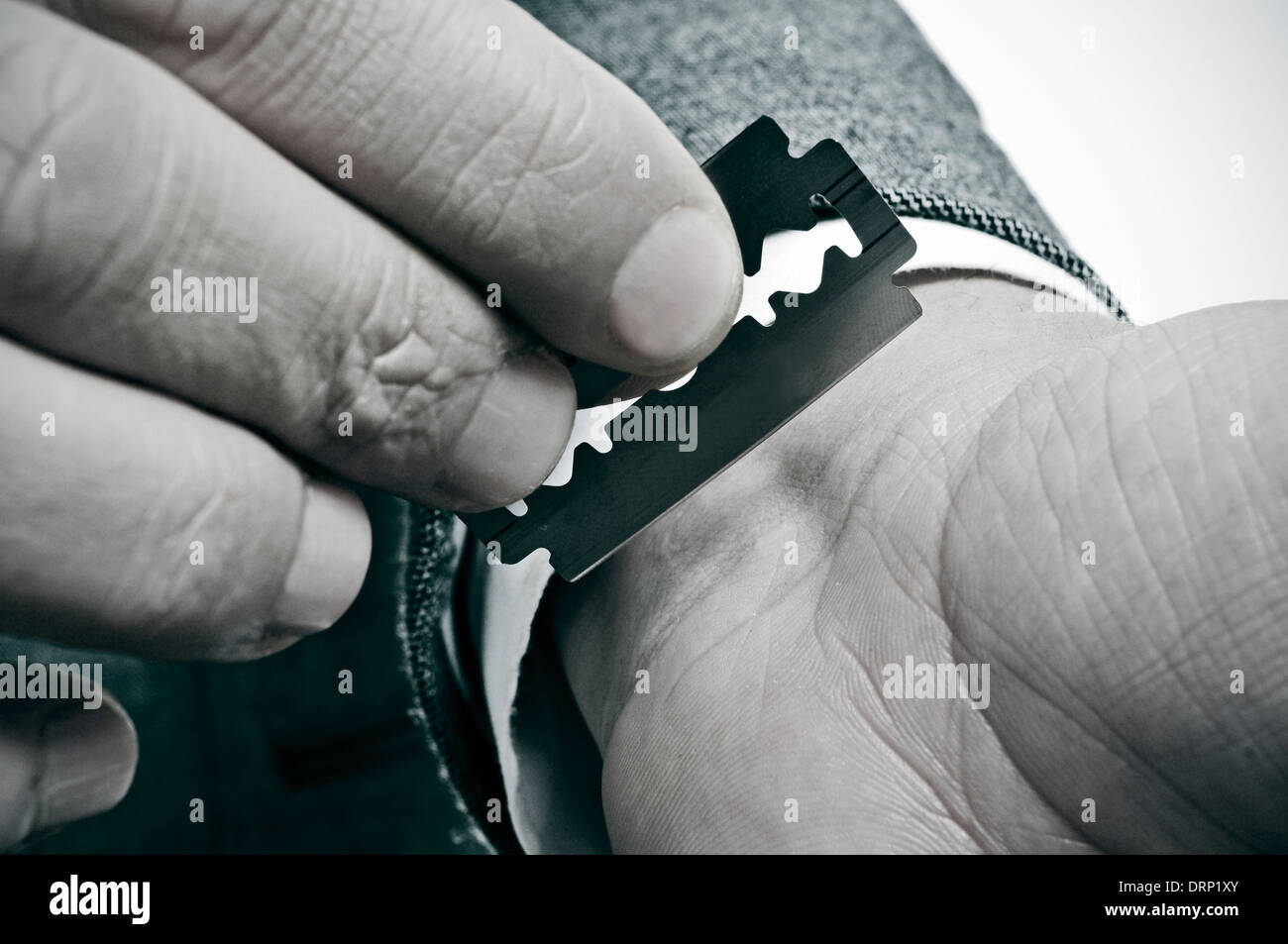
Cutting Wrist Stockfotos und bilder Kaufen Alamy
The technical term for cutting is non- suicidal self-injury, and it's defined as the deliberate, self-inflicted destruction of body tissue. But keep in mind two important facts: First, cutters.

FileSelfHarm2017.jpg 维基百科,自由的百科全书
Self-harm can be a way for a person to feel something when experiencing numbness or to distract themselves from depression or anxiety. Some people cut to create a wound that can symbolize their.
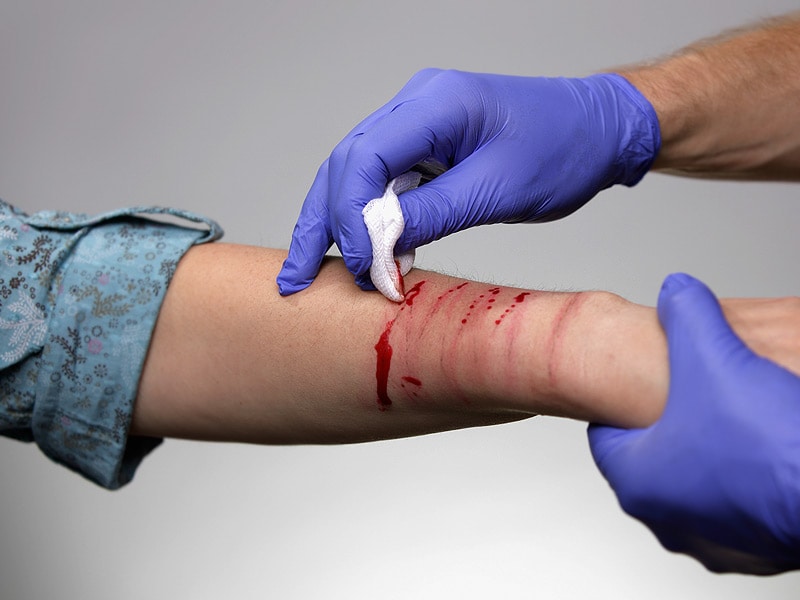
HighDose Antidepressants in Youth May Up Risk for SelfHarm
For them, cutting and other types of self-harm can be a way to test whether they can still "feel" pain. Others describe it as a way of "waking up" from that emotional numbness. Self-inflicted physical pain is specific and visible. For some, the physical pain can seem preferable to emotional pain. Emotional pain can feel vague and hard to.